Curbside Consult with Dr. Jayne 9/24/18
Being in the consulting world, I am exposed to a large variety of practices, partnerships, health systems, integrated delivery systems, and more. It’s always challenging when clients and prospects want me to “find someone that looks just like us” before they agree to start working on a project.
I let them know that it’s not just a question of finding someone in my client base that has similar characteristics, but sometimes even finding someone in the healthcare realm that looks like them is challenging to impossible. Explaining this can be difficult, especially after clients have interacted with vendor sales reps who have done their best to convince them that as long as they talk to someone in the same specialty, or as long as they talk to a group of the same size, that they can expect to have comparable experiences.
I see this with both small and large clients, even with large health systems that think that just because XYZ health system on the other side of the country did a certain project a certain way, that they will have similar outcomes. There are so many variables that play into a project’s success, that it often becomes one of those “your mileage may vary” situations.
I ran across this recently with an organization that was looking to understand what size of a team they needed to support their ambulatory EHR needs after migration to a new system. They seemed rather upset that I couldn’t just tell them how many people to hire, without performing some level of discovery around the level of support they planned to provide, what their proposed governance structure would look like, what the organization’s support budget was, and what skill set they expected the team to have.
It’s a complex equation, and I always try to attack the idea of governance – both clinical and application – as the first step in figuring out what makes a group tick and what their needs might be. Organizations that understand the value of governance are like gold to me. They understand that decision-making is important, as is understanding who owns the application and who is responsible for making decisions related to implementation, maintenance, support, and upgrades.
When an organization decides to have tight governance, it can result in not only cost savings due to decreased variation, but also in measurable quality when providers understand that it’s important for people to deliver care in a standardized way. Many organizations do a good job with this during the design and build phases of an implementation, but once the system goes live it’s tempting to fall into bad habits.
Organizations may make customizations to appease a single provider or a small group of providers, which not only consumes resources in the present time, but also in the future, as those customizations have to be constantly evaluated against upgraded software versions. Some organizations I’ve worked with don’t even track their customizations, so they can’t possibly evaluate them. Each upgrade becomes a bit of a surprise as they try to figure out what the “out of the box” software looks like vs. what they have installed in their environments.
My first Lean Sigma project years ago was to work on an EHR upgrade, and I admit that the project itself failed – we ended up not taking the upgrade – but we learned a tremendous amount about the methodology needed to successfully evaluate a new release and get it through the upgrade process. We created an evaluation paradigm that I still use today, across multiple vendors and even outside of EHR applications.
Sometimes the decision to modify the application rests with a clinical committee, but other times it’s the nebulous “IT” that reviews requests and makes the changes. This is unfortunate because technology projects require care and feeding not only by the technical team, but by clinical and operational owners. However, it’s easier to blame “IT” rather than addressing inadequate or absent governance. Other groups may keep their governance structures after go-live, but they become weak over time due to shifting priorities, members’ attention being focused elsewhere, or outright neglect.
It’s great when things are ticking along just fine, but bringing your governance group together quarterly even if there aren’t major decisions to be made isn’t a bad idea. There may be issues that are brought to light or maybe the group just confirms that things are going well, but it’s one of those things that if you don’t ask, you might be missing problems that you didn’t even know existed. If you can’t even get people in the room, that might be a red flag for apathy or end users checking out rather than engaging.
Governance can be tightly linked to management, although it’s best if neither exists in a vacuum. Strong management helps ensure that decisions that are made are carried out in an effective and cost-efficient manner. Effective management is what transforms an organization to being reactive towards the squeaky wheel into one that can proactively look for issues and identify solutions before things turn into problems. It’s often difficult though to have strong management with physician groups, especially when there are numerous competing personalities and where organizational politics becomes a factor.
I’ve seen so many groups take a page out of “Lord of the Flies” rather than be willing to address difficult colleagues or tackle ineffective team members. When I work with them, I present techniques for communication and consensus-building and sometimes it seems like this is the first time they heard that there are “treatments” that can help get them through the rough spots just like there are remedies for medical conditions.
Both governance and management can be tightly linked to culture. I frequently encounter organizations that can’t articulate their culture, and I guarantee that if the leadership can’t even define the concept, they’re not doing a great job of carrying it to the rest of the organization. If leadership is preaching the need for strong governance and effective management,and then doesn’t deliver on those expectations at the highest levels, it becomes not only demoralizing, but often costly for the organization which ends up floundering. The importance of these relatively “soft” disciplines shouldn’t be underestimated.
It’s with all of these factors mind that I approach each organization I work with. One has to understand who they are, where they have been, where they are going, and where they want to be before you can make recommendations to help them. When you’ve seen one organization, you’ve seen one organization, regardless of how similar they may be in size, scope, specialization, etc. It’s tough to determine whether your experiences might be like someone else’s without asking some difficult questions.
I challenge organizations who are in the market as buyers to consider this concept when you are presented with a reference site or a case study that someone is trying to use to convince you to buy, or when you’re trying to determine your implementation or support model. You might find yourself asking some difficult questions of your own organization. Uncomfortable as it might feel, it’s a good thing.
How does your organization approach concepts like governance? Leave a comment or email me.

Email Dr. Jayne.




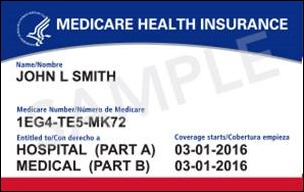
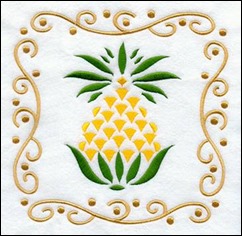






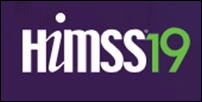


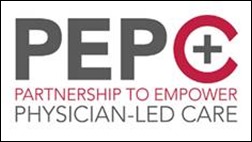
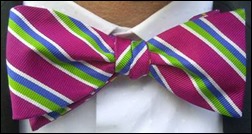







Re: Dr Z. Great story, but whatever happened to professional courtesy???